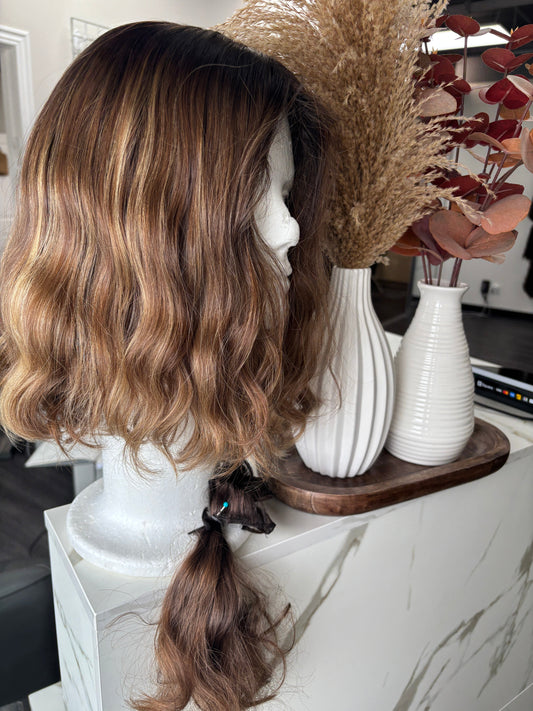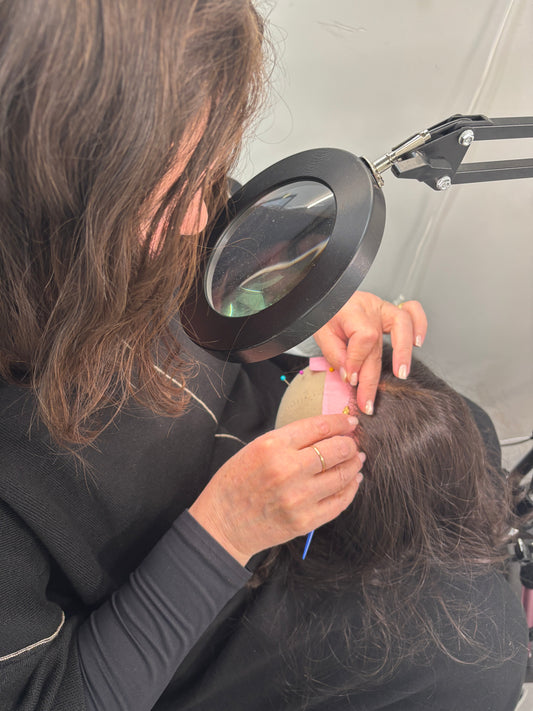Alopecia, a term for hair loss, can occur in various forms, its presence often unexpected and the emotions it engenders complex. The condition, while physically evident, carries an emotional weight that is less visible but deeply impactful. Understanding how alopecia intersects with our perceptions of self and the pursuit of matching hair color to pigmentation for wigs is essential in recognizing the full scope of its influence on individuals.
What Exactly Is Alopecia?
Alopecia is not a singular condition but an umbrella term that covers different types of hair loss. The most commonly known type, Alopecia Areata, leads to patchy hair loss and can progress to more extensive forms, such as Alopecia Totalis and Universalis, leading to total hair loss on the scalp or body. Its roots lie in an autoimmune response, where the immune system mistakenly attacks the hair follicles resulting in hair fall.
The Real Feelings Behind Hair Loss
For many, hair is a defining aspect of personal identity, an expression of style, and a symbol of health. To experience its loss can shake the very foundations of how one perceives and presents themselves to the world. The feelings associated with alopecia can span a broad spectrum—from initial shock and denial to frustration, sadness, and for some, eventual acceptance.
Authentic Look Wigs: A Salve for the Self-Image
In the realm of alopecia, wigs are more than aesthetic accessories—they represent a form of psychological solace, a step towards reclaiming one’s altered self-image. Authentic look wigs, especially those tailored to harmonize with an individual’s skin pigmentation, can offer an immense uplift in self-confidence, making the journey with alopecia more manageable.
Alopecia: Prevalence and Possible Triggers
Alopecia does not discriminate; it affects people of all ages, genders, and ethnicities. Its triggers can be as varied as they are individual—from genetic predisposition to environmental factors such as stress, nutritional deficiencies, and certain medications, delineating how multifaceted and unpredictable the condition is.
Seeking and Providing Support
A diagnosis of alopecia can feel isolating, but it is a path tread by many. Support networks, whether online forums, local support groups, or medical counseling, can be heartening. In such communities, shared stories become a source of strength, and understanding others’ methods of coping can be incredibly comforting.
Managing the Impact of Alopecia
Managing alopecia involves both medical and personal strategies. While there’s no one-size-fits-all solution, treatments range from topical applications and oral medications to advanced therapies such as platelet-rich plasma (PRP). Beyond medical interventions, adopting a nurturing lifestyle with stress-reducing practices and a healthful diet may provide some relief and empowerment.
The Journey of Matching Wigs to Skin Tone
For some experiencing hair loss, finding a wig that matches not only in style but also in hue to one’s skin pigmentation can be transformative. It’s about crafting an illusion so real that it defies the stare of alopecia itself. Therefore, it’s essential to closely consider the color, hairline, texture, and fit of a wig—factors that coalesce to form a lifelike semblance of the hair once had.
Conclusion
To live with alopecia is to embark on a deeply personal journey, one that challenges perceptions of beauty and identity. The condition stretches beyond the physical, touching on realms of emotional and psychological well-being. And though the path may be unsteady, advances in wig technology and a more profound societal understanding offer a beacon of hope—a testament to human resilience and the enduring pursuit of self-expression.



